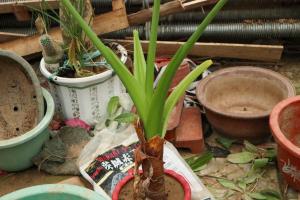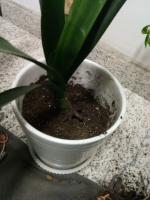What Kind of Relationship is an Air Plant and Tree?
Air plants, scientifically known as Tillandsia, are unique types of plants that are able to grow without soil. Instead, they absorb their nutrients and moisture from the air through specially adapted leaves called trichomes. Despite their ability to grow on their own, air plants can also form relationships with certain trees in the forest known as host trees.
What are Host Trees?
Air plants do not form roots in soil or draw their nutrients from the ground. Instead, they rely on host trees to provide them with support and anchor them in place. Host trees are tall and strong trees that provide air plants with a place to grow, while the air plants absorb moisture and nutrients from the air and rain that fall on the surface of the host tree.
The Role of the Host Tree
Host trees provide air plants with physical support, allowing the plants to grow and thrive without having to root into the ground. They also provide a microclimate that is beneficial to the air plants. Host trees tend to be tall with exposed, sun-soaked branches that provide lots of light and air circulation. This environment is perfect for air plants, as they require plenty of bright, filtered light and good air circulation to thrive.
The Benefits of a Host Tree for Air Plants
Air plants get several benefits from growing on host trees. Firstly, host trees provide a stable platform for air plants to thrive in, and prevent them from being blown away by strong winds. Additionally, they help the air plants to absorb important nutrients that would otherwise be difficult to come by in their natural environment. This is because tree bark contains trace amounts of beneficial nutrients such as calcium and magnesium, which can be absorbed by the air plants through their trichomes.
The Relationship between Air Plants and Host Trees
The relationship between air plants and host trees is a unique and fascinating one. Air plants form a mutually beneficial relationship with host trees, where both parties benefit from each other's presence. The air plants get the physical support and nutrients they need to survive, while the host tree benefits from having air plants growing on its branches, which enhances its overall biodiversity and ecological stability.
Conclusion
Air plants and host trees form a unique relationship in nature that is essential for the survival of air plants. Host trees provide air plants with a stable platform to grow on, and the air plants in turn provide the host tree with numerous benefits such as increased biodiversity and ecological stability. This relationship is a beautiful example of how organisms can form mutually beneficial relationships in nature, and highlights the importance of biodiversity and ecological stability in our natural environment.

 how many times do yo...
how many times do yo... how many planted tre...
how many planted tre... how many pine trees ...
how many pine trees ... how many pecan trees...
how many pecan trees... how many plants comp...
how many plants comp... how many plants can ...
how many plants can ... how many plants and ...
how many plants and ... how many pepper plan...
how many pepper plan...






























